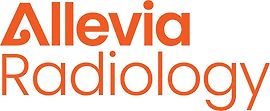Central Auckland > Private Hospitals & Specialists > Allevia Radiology >
Allevia Radiology - Epsom 1 & 2
Private Service, Radiology, Pregnancy Ultrasound
Today
Description
A trusted name in New Zealand for over 40 years, Allevia Radiology (formerly Mercy Radiology) has been a leader in imaging innovation, delivering expert diagnostic care supported by the latest technology. As part of Allevia Health, one of the largest private healthcare groups in the country, we are proud to support A Better Health Journey for all our patients. With multiple branches across Auckland and surrounding regions, we combine cutting-edge imaging with compassionate care to ensure timely, accurate, and reassuring service every step of the way.
Allevia Radiology - Epsom 1 & Allevia Radiology - Epsom 2, is conveniently situated within the Allevia Hospital grounds allowing you to easily access comprehensive radiology treatments. We offer:
- X-ray
- Ultrasound
- MRI
- CT
- Biopsies
- Fluoroscopy
- Image Guided Procedures
- Barium Studies
With advanced technology and the expertise of our caring specialists, Allevia Radiology - Epsom 1 & 2 is here to support your family with compassion and clarity - especially in moments of worry, when answers matter most.
Refer your patients to us.
Appointments can be made via our Online-Booking tool.
X-ray services are available as walk-ins at all our branches.
We have plenty of parking, including accessible parking and wheelchair access. Find us here!
(Further patient and parking information can be found here!)
We're here to take you on A Better Health Journey.
Consultants
-

Dr Pilar Aparisi Gomez
Radiologist
-

Dr Mark Barnett
Radiologist
-

Dr Cynthia Benny
Radiologist
-

Dr David Benson-Cooper
Radiologist
-

Dr Susil Bera
Radiologist
-

Dr Stefan Brew
Radiologist
-

Dr John Cain
Radiologist
-

Dr Supriya Cardoza
Radiologist
-

Dr Trevor Chan
Radiologist
-

Dr Devesh Dixit
Radiologist
-

Dr Ashley Ellis
Radiologist
-
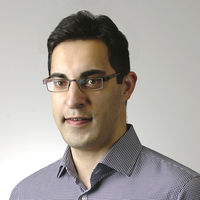
Dr Marcus Ghuman
Radiologist
-

Dr Rohana Gillies
Radiologist
-

Dr Keshnee Govender
Radiologist
-

Dr M Anne Harkness
Radiologist
-

Dr Andrew Henderson
Radiologist
-

Dr Jocelyn Homer
Radiologist
-
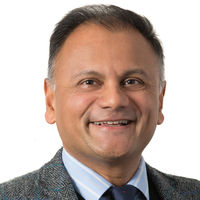
Dr Sunderarajan Jayaraman
Radiologist
-

Dr Puja Kashyap
Radiologist
-

Dr Colette Kennedy
Radiologist
-

Dr Joo Kim
Radiologist
-

Dr Lara Kimble
Radiologist
-

Dr Ray Li
Radiologist
-

Dr Remy Lim
Radiologist
-
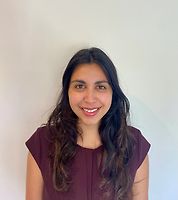
Dr Neda Maani
Radiologist
-

Dr Peter Millener
Radiologist
-
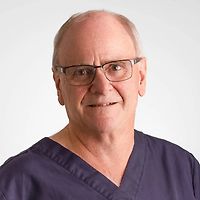
Dr Mark Osborne
Radiologist
-

Dr Hana Pak
Radiologist
-

Dr Hament Pandya
Radiologist
-

Dr Ellen Perry
Radiologist
-

Dr Clinton Pinto
Radiologist
-

Dr Sugania Reddy
Radiologist
-

Dr Jane Reeve
Radiologist
-

Dr John Scotter
Radiologist
-

Dr Kristin Smith
Radiologist
-

Dr Hemanth Subramaniam
Radiologist
-

Dr Zaineb Ukra
Radiologist
-

Dr Claudia Weidekamm
Radiologist
-

Dr Margaret Weston
Radiologist
-

Dr Jeremy Whitlock
Radiologist
-

Dr Ai Wain Yong
Radiologist
-

Dr Sook Yong
Radiologist
-

Dr Lee Young
Radiologist
How do I access this service?
Referral
Make an appointment
Walk in
Accidents happen which is why we offer walk-in service for X-rays only.
Referral Expectations
For Referrers
For your convenience to refer your patients and quick access to reports, please get set-up with our InteleRad PACS.
You may also download and use our editable referral form here.
For Patients
Visit our website https://www.alleviaradiology.co.nz/ to make an appointment or phone us. If you have any questions, our staff will be pleased to help you.
We can give you accurate information regarding cost and examination if you or your doctor email or upload the referral form to us. For some procedures, we will advise you to contact your medical insurance company regarding prior approval or policy cover.
Click here for the Allevia Radiology website.
Fees and Charges Description
Allevia Radiology is affiliated with most insurance providers including Southern Cross. Please contact us for further details.
Hours
Services
Available at Epsom 1 An X-ray is a high frequency, high energy wave form. It cannot be seen with the naked eye, but can be picked up on photographic film. Although you may think of an X-ray as a picture of bones, a trained observer can also see air spaces, like the lungs (which look black) and fluid (which looks white, but not as white as bones). What to expect? You will have all metal objects removed from your body. You will be asked to remain still in a specific position and hold your breath on command. There are staff present, but they will not necessarily remain in the room, but will speak with you via an intercom system and will be viewing the procedure constantly through a windowed control room. The examination time will vary depending on the type of procedure required, but as a rule it will take around 30 minutes.
Available at Epsom 1 An X-ray is a high frequency, high energy wave form. It cannot be seen with the naked eye, but can be picked up on photographic film. Although you may think of an X-ray as a picture of bones, a trained observer can also see air spaces, like the lungs (which look black) and fluid (which looks white, but not as white as bones). What to expect? You will have all metal objects removed from your body. You will be asked to remain still in a specific position and hold your breath on command. There are staff present, but they will not necessarily remain in the room, but will speak with you via an intercom system and will be viewing the procedure constantly through a windowed control room. The examination time will vary depending on the type of procedure required, but as a rule it will take around 30 minutes.
Available at Epsom 1
An X-ray is a high frequency, high energy wave form. It cannot be seen with the naked eye, but can be picked up on photographic film. Although you may think of an X-ray as a picture of bones, a trained observer can also see air spaces, like the lungs (which look black) and fluid (which looks white, but not as white as bones).
What to expect?
You will have all metal objects removed from your body. You will be asked to remain still in a specific position and hold your breath on command. There are staff present, but they will not necessarily remain in the room, but will speak with you via an intercom system and will be viewing the procedure constantly through a windowed control room.
The examination time will vary depending on the type of procedure required, but as a rule it will take around 30 minutes.
Available at Epsom 2 In ultrasound, a beam of sound at a very high frequency (that cannot be heard) is sent into the body from a small vibrating crystal in a hand-held scanner head. When the beam meets a surface between tissues of different density, echoes of the sound beam are sent back into the scanner head. The time between sending the sound and receiving the echo back is fed into a computer, which in turn creates an image that is projected on a television screen. Ultrasound is a very safe type of imaging; this is why it is so widely used during pregnancy. Doppler ultrasound A Doppler study is a noninvasive test that can be used to evaluate blood flow by bouncing high-frequency sound waves (ultrasound) off red blood cells. The Doppler Effect is a change in the frequency of sound waves caused by moving objects. A Doppler study can estimate how fast blood flows by measuring the rate of change in its pitch (frequency). A Doppler study can help diagnose bloody clots, heart and leg valve problems and blocked or narrowed arteries. What to expect? After lying down, the area to be examined will be exposed. Generally a contact gel will be used between the scanner head and skin. The scanner head is then pressed against your skin and moved around and over the area to be examined. At the same time the internal images will appear onto a screen.
Available at Epsom 2 In ultrasound, a beam of sound at a very high frequency (that cannot be heard) is sent into the body from a small vibrating crystal in a hand-held scanner head. When the beam meets a surface between tissues of different density, echoes of the sound beam are sent back into the scanner head. The time between sending the sound and receiving the echo back is fed into a computer, which in turn creates an image that is projected on a television screen. Ultrasound is a very safe type of imaging; this is why it is so widely used during pregnancy. Doppler ultrasound A Doppler study is a noninvasive test that can be used to evaluate blood flow by bouncing high-frequency sound waves (ultrasound) off red blood cells. The Doppler Effect is a change in the frequency of sound waves caused by moving objects. A Doppler study can estimate how fast blood flows by measuring the rate of change in its pitch (frequency). A Doppler study can help diagnose bloody clots, heart and leg valve problems and blocked or narrowed arteries. What to expect? After lying down, the area to be examined will be exposed. Generally a contact gel will be used between the scanner head and skin. The scanner head is then pressed against your skin and moved around and over the area to be examined. At the same time the internal images will appear onto a screen.
Available at Epsom 2
In ultrasound, a beam of sound at a very high frequency (that cannot be heard) is sent into the body from a small vibrating crystal in a hand-held scanner head. When the beam meets a surface between tissues of different density, echoes of the sound beam are sent back into the scanner head. The time between sending the sound and receiving the echo back is fed into a computer, which in turn creates an image that is projected on a television screen. Ultrasound is a very safe type of imaging; this is why it is so widely used during pregnancy.
Doppler ultrasound
A Doppler study is a noninvasive test that can be used to evaluate blood flow by bouncing high-frequency sound waves (ultrasound) off red blood cells. The Doppler Effect is a change in the frequency of sound waves caused by moving objects. A Doppler study can estimate how fast blood flows by measuring the rate of change in its pitch (frequency). A Doppler study can help diagnose bloody clots, heart and leg valve problems and blocked or narrowed arteries.
What to expect?
After lying down, the area to be examined will be exposed. Generally a contact gel will be used between the scanner head and skin. The scanner head is then pressed against your skin and moved around and over the area to be examined. At the same time the internal images will appear onto a screen.
Available at Epsom 2 Ultrasound imaging, also called ultrasound scanning, is a method of obtaining pictures from inside the human body through the use of high frequency sound waves. Obstetric ultrasound refers to the specialised use of this technique to produce a picture of your unborn baby while it is inside your uterus (womb). The sound waves are emitted from a hand-held nozzle, which is placed on your stomach, and reflection of these sound waves is displayed as a picture of the moving foetus (unborn baby) on a monitor screen. No x-rays are involved in ultrasound imaging. Measurements of the image of the foetus help in the assessment of its size and growth as well as confirming the due date of delivery.
Available at Epsom 2 Ultrasound imaging, also called ultrasound scanning, is a method of obtaining pictures from inside the human body through the use of high frequency sound waves. Obstetric ultrasound refers to the specialised use of this technique to produce a picture of your unborn baby while it is inside your uterus (womb). The sound waves are emitted from a hand-held nozzle, which is placed on your stomach, and reflection of these sound waves is displayed as a picture of the moving foetus (unborn baby) on a monitor screen. No x-rays are involved in ultrasound imaging. Measurements of the image of the foetus help in the assessment of its size and growth as well as confirming the due date of delivery.
Available at Epsom 2
Ultrasound imaging, also called ultrasound scanning, is a method of obtaining pictures from inside the human body through the use of high frequency sound waves. Obstetric ultrasound refers to the specialised use of this technique to produce a picture of your unborn baby while it is inside your uterus (womb).
The sound waves are emitted from a hand-held nozzle, which is placed on your stomach, and reflection of these sound waves is displayed as a picture of the moving foetus (unborn baby) on a monitor screen.
No x-rays are involved in ultrasound imaging. Measurements of the image of the foetus help in the assessment of its size and growth as well as confirming the due date of delivery.
Available at Epsom 1 An MRI machine does not work like an X-ray or CT; it is used for exact images of internal organs and body structures. This method delivers clear images without the exposure of radiation. The procedure uses a combination of magnetic fields and radio waves which results in an image being made using the MRI’s computer. What to expect? You will have all metal objects removed from your body. You will lie down on a narrow padded moveable table that will be slid into the scanner, through a circular opening. You will feel nothing while the scan is in progress, but some people can feel slightly claustrophobic or closed in, whilst inside the scanner. You will be asked to remain still and hold your breath on command. There are staff present, but they will not necessarily remain in the room, but will speak with you via an intercom system and will be viewing the procedure constantly through a windowed control room, from where they will run the scanner. Some procedures will require Contrast Medium. Contrast medium is a substance that makes the image of the CT or MRI clearer. Contrast can be given by mouth, rectally, or by injection into the bloodstream. The scan time will vary depending on the type of examination required, but as a rule it will take around 30 minutes.
Available at Epsom 1 An MRI machine does not work like an X-ray or CT; it is used for exact images of internal organs and body structures. This method delivers clear images without the exposure of radiation. The procedure uses a combination of magnetic fields and radio waves which results in an image being made using the MRI’s computer. What to expect? You will have all metal objects removed from your body. You will lie down on a narrow padded moveable table that will be slid into the scanner, through a circular opening. You will feel nothing while the scan is in progress, but some people can feel slightly claustrophobic or closed in, whilst inside the scanner. You will be asked to remain still and hold your breath on command. There are staff present, but they will not necessarily remain in the room, but will speak with you via an intercom system and will be viewing the procedure constantly through a windowed control room, from where they will run the scanner. Some procedures will require Contrast Medium. Contrast medium is a substance that makes the image of the CT or MRI clearer. Contrast can be given by mouth, rectally, or by injection into the bloodstream. The scan time will vary depending on the type of examination required, but as a rule it will take around 30 minutes.
Available at Epsom 1
An MRI machine does not work like an X-ray or CT; it is used for exact images of internal organs and body structures. This method delivers clear images without the exposure of radiation.
The procedure uses a combination of magnetic fields and radio waves which results in an image being made using the MRI’s computer.
What to expect?
You will have all metal objects removed from your body. You will lie down on a narrow padded moveable table that will be slid into the scanner, through a circular opening.
You will feel nothing while the scan is in progress, but some people can feel slightly claustrophobic or closed in, whilst inside the scanner. You will be asked to remain still and hold your breath on command. There are staff present, but they will not necessarily remain in the room, but will speak with you via an intercom system and will be viewing the procedure constantly through a windowed control room, from where they will run the scanner.
Some procedures will require Contrast Medium. Contrast medium is a substance that makes the image of the CT or MRI clearer. Contrast can be given by mouth, rectally, or by injection into the bloodstream.
The scan time will vary depending on the type of examination required, but as a rule it will take around 30 minutes.
Available at Epsom 2 With CT you can differentiate many more things than with a normal X-ray. A CT image is created by using an X-ray beam, which is sent through the body from different angles, and by using a complicated mathematical process the computer of the CT is able to produce an image. This allows cross-sectional images of the body without cutting it open. The CT is used to view all body structures but especially soft tissue such as body organs (heart, lungs, liver etc.). What to expect? You will have all metal objects removed from your body. You will lie down on a narrow padded moveable table that will be slid into the scanner, through a circular opening. You will feel nothing while the scan is in progress, but some people can feel slightly claustrophobic or closed in, whilst inside the scanner. You will be asked to remain still and hold your breath on command. There are staff present, but they will not necessarily remain in the room, but will speak with you via an intercom system and will be viewing the procedure constantly through a windowed control room, from where they will run the scanner. Some procedures will require Contrast Medium. Contrast medium is a substance that makes the image of the CT or MRI clearer. Contrast medium can be given by mouth, rectally, or by injection into the bloodstream.v The scan time will vary depending on the type of examination required, but as a rule it will take around 30 minutes.
Available at Epsom 2 With CT you can differentiate many more things than with a normal X-ray. A CT image is created by using an X-ray beam, which is sent through the body from different angles, and by using a complicated mathematical process the computer of the CT is able to produce an image. This allows cross-sectional images of the body without cutting it open. The CT is used to view all body structures but especially soft tissue such as body organs (heart, lungs, liver etc.). What to expect? You will have all metal objects removed from your body. You will lie down on a narrow padded moveable table that will be slid into the scanner, through a circular opening. You will feel nothing while the scan is in progress, but some people can feel slightly claustrophobic or closed in, whilst inside the scanner. You will be asked to remain still and hold your breath on command. There are staff present, but they will not necessarily remain in the room, but will speak with you via an intercom system and will be viewing the procedure constantly through a windowed control room, from where they will run the scanner. Some procedures will require Contrast Medium. Contrast medium is a substance that makes the image of the CT or MRI clearer. Contrast medium can be given by mouth, rectally, or by injection into the bloodstream.v The scan time will vary depending on the type of examination required, but as a rule it will take around 30 minutes.
Available at Epsom 2
With CT you can differentiate many more things than with a normal X-ray. A CT image is created by using an X-ray beam, which is sent through the body from different angles, and by using a complicated mathematical process the computer of the CT is able to produce an image. This allows cross-sectional images of the body without cutting it open. The CT is used to view all body structures but especially soft tissue such as body organs (heart, lungs, liver etc.).
What to expect?
You will have all metal objects removed from your body. You will lie down on a narrow padded moveable table that will be slid into the scanner, through a circular opening.
You will feel nothing while the scan is in progress, but some people can feel slightly claustrophobic or closed in, whilst inside the scanner. You will be asked to remain still and hold your breath on command. There are staff present, but they will not necessarily remain in the room, but will speak with you via an intercom system and will be viewing the procedure constantly through a windowed control room, from where they will run the scanner.
Some procedures will require Contrast Medium. Contrast medium is a substance that makes the image of the CT or MRI clearer. Contrast medium can be given by mouth, rectally, or by injection into the bloodstream.v
The scan time will vary depending on the type of examination required, but as a rule it will take around 30 minutes.
Available at Epsom 1 and 2
Available at Epsom 1 and 2
Service types: Image guided procedures | Interventional radiology.
Available at Epsom 1 and 2
Image guided procedures in radiology use imaging technologies such as ultrasound, CT, or MRI to help doctors perform minimally invasive procedures such as biopsies and injections. The imaging allows doctors to be more precise, which often means less pain and faster recovery for the patient.
Image guided procedures in radiology use imaging technologies such as ultrasound, CT, or MRI to help doctors perform minimally invasive procedures such as biopsies and injections. The imaging allows doctors to be more precise, which often means less pain and faster recovery for the patient.
Image guided procedures in radiology use imaging technologies such as ultrasound, CT, or MRI to help doctors perform minimally invasive procedures such as biopsies and injections. The imaging allows doctors to be more precise, which often means less pain and faster recovery for the patient.
Available at Epsom 1
Available at Epsom 1
Available at Epsom 1
Available at Epsom 1 A type of imaging that uses continuous X-rays to show how parts of the body work in real time.
Available at Epsom 1 A type of imaging that uses continuous X-rays to show how parts of the body work in real time.
Available at Epsom 1
A type of imaging that uses continuous X-rays to show how parts of the body work in real time.
Disability Assistance
Wheelchair access
Online Booking URL
Public Transport
The Auckland Transport Journey Planner will help you to plan your journey.
Parking
Epsom 1
Please enter through Gate 1 - the main hospital entrance and go up the ramp for Allevia Radiology Epsom 1 parking.
Do not pay for parking. Instead please provide reception with your registration number for us to waive the parking fee.
Epsom 2
Please enter through Gate 3 - the radiology entrance for parking outside the building. If no parking is available, please enter through Gate 1 - the main hospital entrance and walk down to the front of the hospital.
Do not pay for parking. Instead please provide reception with your registration number for us to waive the parking fee.
Pharmacy
Website
Contact Details
Allevia Hospital Epsom, 98 Mountain Road, Epsom, Auckland
Central Auckland
-
Phone
09 630 3324
Website
Epsom 1
Gate 1 - Main Hospital Entrance
Allevia Hospital Epsom
98 Mountain Road
Epsom, Auckland 1023
Email: epsom1@alleviaradiology.co.nz
Website: https://www.alleviaradiology.co.nz/locations/epsom-1
[X-ray, MRI, Biopsies, Barium studies, Fluoroscopy]
Epsom 1 - Directions Map
Epsom 1 - Directions Video
Epsom 2
Gate 3 - Radiology Entrance
Allevia Hospital Epsom
98 Mountain Road
Epsom, Auckland 1023
Email: epsom2@alleviaradiology.co.nz
Website: https://www.alleviaradiology.co.nz/locations/epsom-2
[US, CT, Biopsies, Image guided procedures]
Epsom 2 - Directions Map
Epsom 2 - Directions Video
Find us here!
Allevia Hospital, Epsom, 98 Mountain Road
Epsom
Auckland
Auckland 1023
Street Address
Allevia Hospital, Epsom, 98 Mountain Road
Epsom
Auckland
Auckland 1023
Postal Address
PO Box 9056
Newmarket
Auckland 1149
Was this page helpful?
This page was last updated at 2:45PM on November 19, 2025. This information is reviewed and edited by Allevia Radiology - Epsom 1 & 2.

